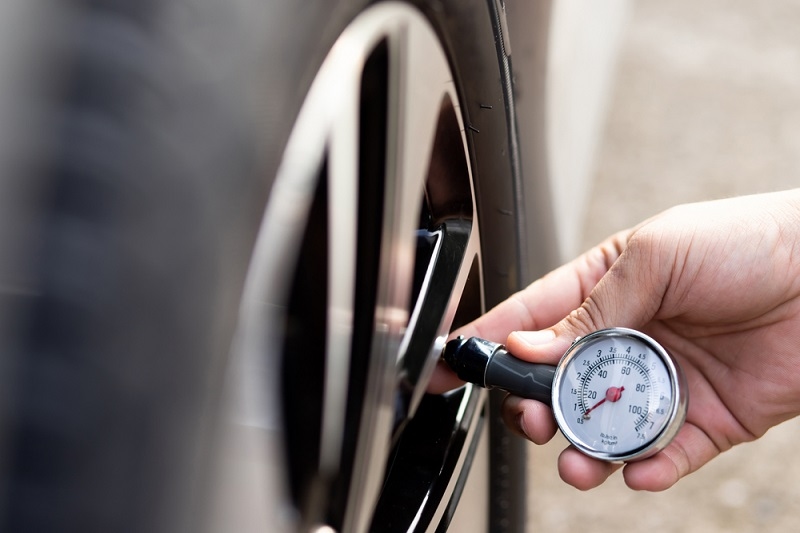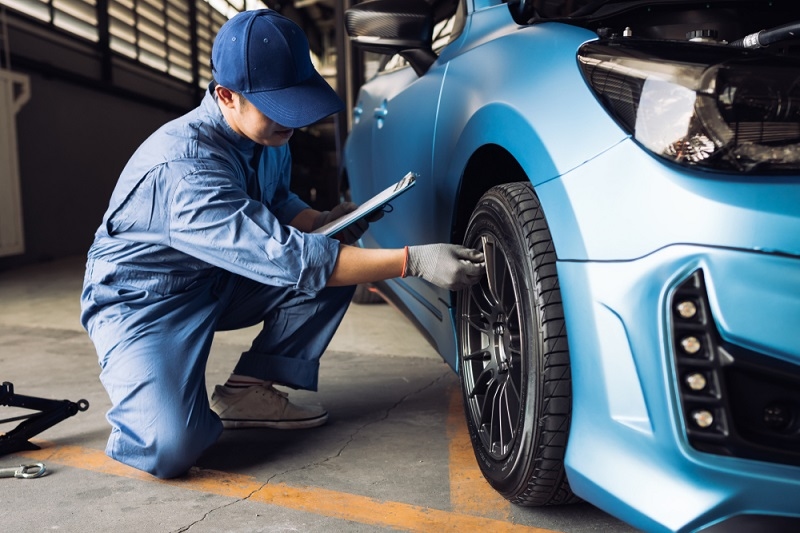
The normal pressure in tires is not a guess. It is something that is written by the vehicle maker and is easy to find. But many drivers either forget to check or are unsure about the right time to do it. However, all you need is a maximum of five minutes to check the manual, which will also save you from various bigger problems in the future. Apart from this, car owners should also know that tire pressure in cold weather changes quickly.
Thus, if you want to learn everything about air pressure in tires, this blog is exactly what you need.
Every vehicle comes with a number that tells the normal pressure in tires. Most cars have it between 32 and 35 PSI, but it may vary a little. This number is not hidden away—it is placed where drivers can easily see it. Inside the driver’s door, on a sticker, sometimes in the manual or near the fuel door.
This is the pressure the car was designed for that is not too high or not too low. Just enough to keep the balance right.
On the tire sidewall, there is another number. It looks similar, but that is the maximum pressure the tire can hold, not the everyday safe level. Confusing the two can be risky. Following the carmaker’s number is always the right choice.
Must Read: Difference Between All Weather Tires VS All Season Tires

The pressure in a car tire affects almost everything while driving because it impacts the handling, braking, and comfort of the vehicle. Something that most people do not understand is that wrong air pressure can damage the tires quickly.
If a tire has low pressure, more of its surface touches the road. This creates heat. Heat weakens the tire. And in some cases, it can even cause it to burst. On the other hand, if the tire has too much air, only the center part touches the ground. That reduces grip and makes the ride harsh.
Balanced pressure helps in the following ways:
Smooth and stable handling
Even wear across the tire surface
Shorter braking distance
Comfortable ride for everyone inside
It’s a small check, but it saves from sudden problems. Drivers who take two minutes to check air pressure in tires avoid many big troubles.
Cold air makes tires lose pressure. This is because air contracts when it cools. For every 10-degree drop, a tire can lose around one PSI. That means a tire filled correctly yesterday may look low this morning.
The tire pressure in cold weather often fools drivers. The tires may look fine, but the reading can be lower than needed. That’s why the check should always be done when the tires are cold. It gives the true reading.
For drivers living in places where mornings are chilly, it’s smart to check more often. This keeps the air pressure in the tire safe and steady.
Winter brings its own set of challenges. Roads covered with snow, ice, or even slush make driving harder. In such times, correct tire pressure in winter is a must.
If the tire is underinflated, it loses grip quickly on slippery roads. If it’s overinflated, it becomes stiff and struggles for traction. Both are risky. That’s why keeping the number right is the safest step.
Some manuals even suggest adding a small amount of air in extreme cold. But the final word always belongs to the vehicle maker’s guide, and following it will always keep things balanced.
Top Pick: Top Car Safety Technologies in 2025 & Features To Look For
Here’s the simple way to check air pressure in tires:
Find the recommended number for normal pressure in tires from the door sticker or the manual.
Make sure the car has been parked for a few hours so the tires are cold.
Remove the valve cap from the tire and place the tool to check air pressure in tires on the valve before pressing it firmly.
Read the number on the screen to understand the air pressure, and repeat the process to be sure.
If the pressure is low, you have to add air, and if it is high, you will need to press the small stem inside the valve to release some air.
Don’t forget to put the cap back. This small process might take a few minutes, but it will ensure that the journey is safe.
No check is complete without the right tool to check air pressure in tires. There are three main kinds:
It has a shape like a pen, making it small and simple to use.
This looks like a small clock and has a needle, which helps you to measure the air pressure.
It shows numbers on a small screen that is clear and easy to read.
Each of these tools works well; you can choose the one that you like the most.
The best time to check air pressure in tires is when they are cold. Early morning before driving or at least three hours after parking.
If the tires are warm, the reading will be higher. Letting out air at that time will leave them too low later. This is why the cold check is the right one.
Once in two weeks is the general rule. However, if you are going for long drives or going out during cold months, it is better to check more often.
The air pressure in tire may look like a small detail, but it shapes every drive. With the right normal pressure in tires, safe handling, smooth rides, and longer tire life are easy to achieve. By checking regularly, adjusting in cold months, and using a simple tool, drivers can keep every journey steady and safe.
1. How to check tire pressure?
Use a tire gauge, press it onto the valve, and compare the reading with the number in your car manual or door sticker.
2. How to check air pressure in tires?
Remove the valve cap, press the gauge on the valve, read the number, and add or release air as needed.
3. How to check tire pressure without a gauge?
It is not easy because low tires can look flat or feel heavy while driving, but a gauge is always the safe option.
4. How often to check tire pressure?
At least once a month. But check more often in cold months or before long journeys.
5. When to check air pressure in tires?
Always when the tires are cold. In the morning or after parking for a few hours.
This content was created by AI